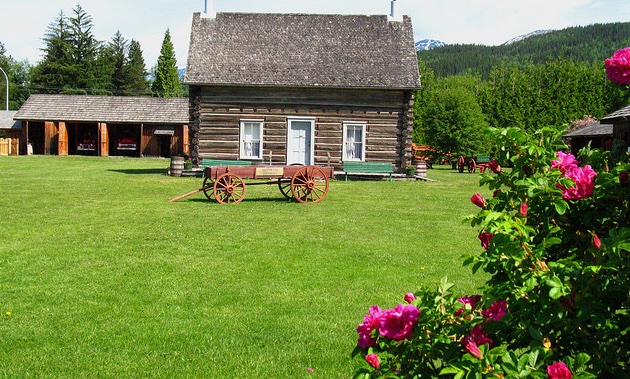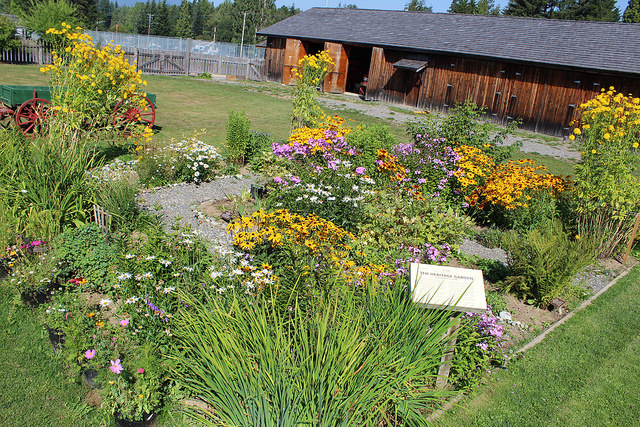Terrace history before and after European contact
The Gitselasu lived in harmony with nature for thousands of years before George Little founded the town of Terrace in 1905.

The area where Terrace, B.C., stands today was founded by George Little in 1905 through the pre-emption system. Anyone homesteading for a certain amount of time was able to claim 160 acres, and if they improved it yearly, they could purchase the land for a reasonable price. Before this, however, people lived on the land for thousands of years, in close and respectful relationship with nature. Today’s visit to Terrace is not complete without experiencing firsthand both elements of the local history.
Heritage Park Museum
Summertime visitors can check out the museum’s Canada Day celebration—the area’s largest event with a historical theme. Kelsey Wiebe, curator at Heritage Park Museum, said the event always draws thousands of people.
“St. Jean Baptiste Day is also a hit in June,” she said. “It includes a downtown historical walking tour and pioneer cemetery walk, among several other immersive history education programs.”
The Heritage Park Museum is the only museum and archive centre in the area. The grounds feature eight original founding Terrace buildings, moved there in the 1980s.

“The museum invites visitors to enter and explore the buildings to discover how people were living at the turn of the century,” said Wiebe. “People can learn about homesteading and mining. The exhibits are fascinating, and guided or self-guided tours are available.”
Kitselas Canyon National Historic Site
Step into First Nations history at Kitselas Canyon National Historic Site, a place where the Gitselasu—People of the Kitselas Canyon—have thrived with fertile rivers and lands since “time immemorial.”
“I like to think of our site as a living culture centre,” said Web Bennett, tour co-ordinator at Kitselas. “It is reflective of who we are today and is a place we use as a catalyst to share our history and culture with visitors.”
The interactive part of the park is made up of four contemporary longhouses, each themed to exemplify a specific element of traditional First Nations life and culture.
“One is the technology longhouse, where the carving, cedar weaving, and other technologies are demonstrated,” said Bennett. “The second is used as a media display centre and has a large screen for media presentations on food gathering, harvesting and preparation, or on the treaty process, dancing, fishing or other topics.”
The media centre also has collection of contemporary (meaning they are newly made) cultural items, including paddles, masks and photos, and other items like fiberglass mouldings of house poles and petroglyphs.
The third longhouse is a wildlife centre housing a collection of full-size and half-size animal mounts.
“It is used to convey our relationship to the animals,” said Bennett. “It is under design and development and it will be set up to tell the story of the Meeting of the Wild Animals, which explains how we got our seasons.”
The fourth longhouse is dedicated to transportation, including how the coming of the railway changed First Nations lives.
Beyond the buildings, an interpretive trail to the canyon has signs marking traditional natural resources like devil’s club and skunk cabbage, and leads to a viewpoint overlooking the Skeena River and Kitselas Canyon.
The site is open summer to early fall, and includes educational programs later in the year.
Freda Diesing School of Northwest Coast Art
Not generally considered a tourist destination, the Freda Diesing School of Northwest Coast Art is an exceptional venue for witnessing master carvers and other artists at work. The school offers long-term programming only, but has an open door policy between 9 a.m. and 4 p.m. on weekdays, when visitors are welcome.
Allison Conway, program and project assistant at the school, said visitors should call ahead to get the most out of a visit.
“Part of the program involves field trips to local areas of cultural significance," said Conway, "as well as guest lectures both in and out of the studio, and a number of student art exhibitions in various local museums and galleries. If we get a request to visit, we can make sure to co-ordinate the best time, or suggest a visit to a student art exhibition.”
Wiebe said a visit to the school is "a wonderful chance to see world-renowned carvers at work with students in a beautiful building.”






